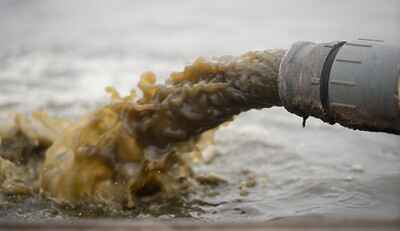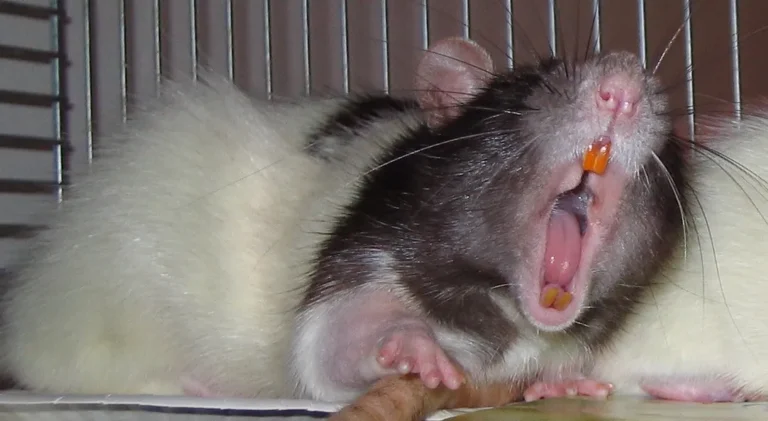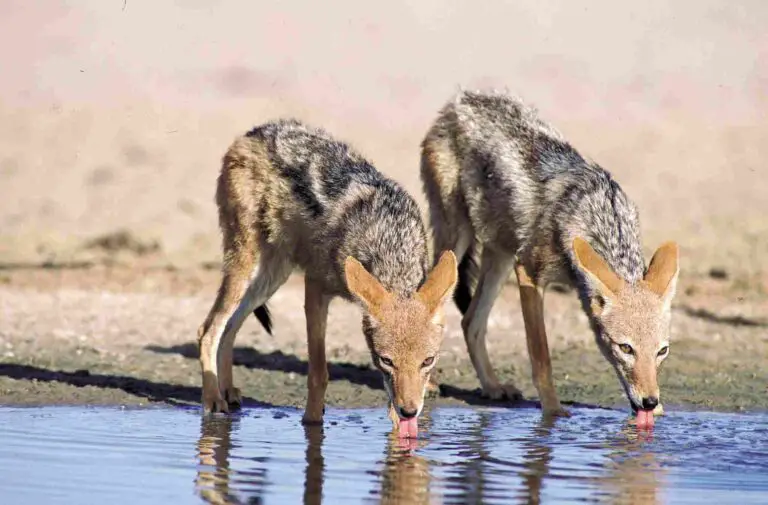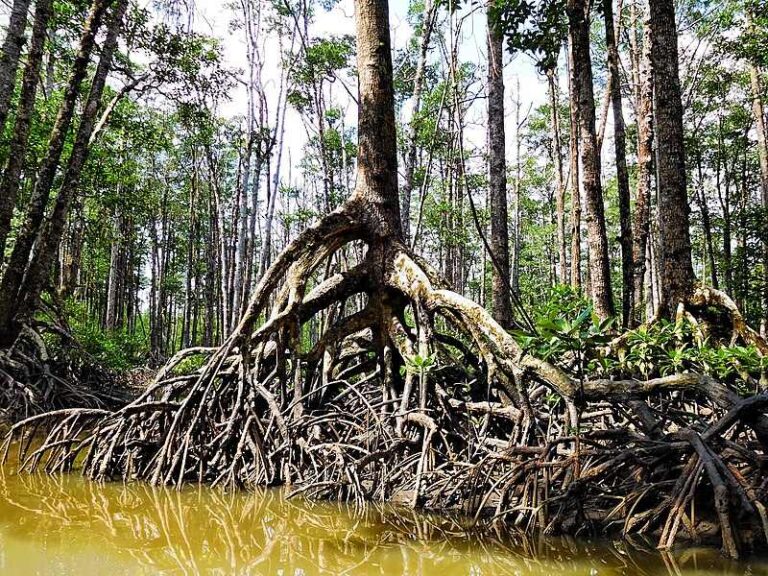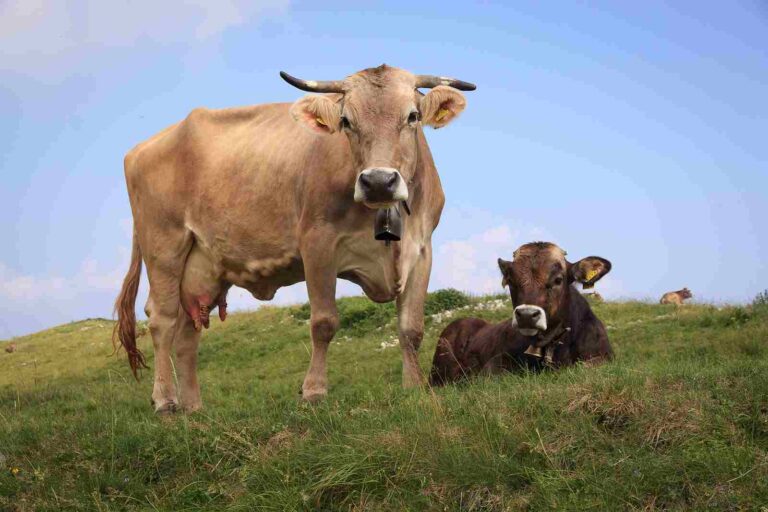5 Types of Water Pollution and Characteristics Explained
Types of water pollution are; chemical pollution (including agricultural, industrial, radioactive), organic pollution (including microbial, sewage, oil spill), thermal pollution, groundwater pollution, and surface water-pollution.
This article discusses the types of water pollution and their individual attributes, as follows;
1). Chemical Pollution (as one of the Types of Water Pollution)
As the name implies, chemical water pollution is the introduction of chemicals into water reserves, in quantities that are potentially hazardous to both biotic and abiotic aspects of the ecosystem.
Chemical type of water pollution is a broad and multifaceted concept that spans across various contexts, fields, processes and events.
The most common form of chemical water pollution is agricultural pollution, which may result from the leaching of farmland chemicals like pesticides, herbicides, and fertilizer [4]. This form of chemical water pollution leads to unnaturally-high levels of elements like nitrogen and phosphorus in nearby water bodies, which may in turn induce a rapid rate of algal growth, in a process known as eutrophication.
Eutrophication reduces the concentration of dissolved oxygen in water bodies, and this translates to lower survival rates for many aquatic animals and plants.
Chemicals like pesticides and herbicides have a toxic effect on water in both artificial reserves and natural-aquatic ecosystems. Like fertilizer, the ripple effects of these chemicals include fish kills, with general decline in species richness, biodiversity and water quality.
Asides agricultural chemicals, industrial chemicals in waste materials and manufacturing-byproducts, can enter into water reserves and cause their degradation.
The types of chemicals involved in water pollution may be grouped broadly as; agricultural, industrial, and domestic.
Nuclear waste can flow into water bodies, often causing both thermal and chemical (thermo-chemical) degradation. This is a high possibility for nuclear plants operating with minimal regulation, and is a prominent cause of marine pollution in such vicinities.
Heavy metals in leachate fluid, from landfills, may infiltrate aquifers, causing groundwater pollution [2]. In some studies, such events are classified as a domestic form of chemical water pollution.
Effects of chemical water pollutants include loss of aquatic life, scarcity of clean water resources, human health ailments, and death from poisoning.
Chemicals that pollute water can also have extended environmental impacts on soil and air. Volatile chemicals may evaporate from the water surface to cause air pollution.
2). Organic Pollution
Organic pollution of water resources occurs when biological processes, organisms and biomass (or its derivatives); in the form of solid, liquid and gaseous organic compounds, cause water to lose its quality and become unsafe.
Organic and inorganic water pollution are two broad divisions that refer to scenarios in which water loses its quality due to high concentration of organic and inorganic pollutants, respectively.
Some examples of organic pollutants in water are; hexabromobiphenyl, polyaromatic hydrocarbons (PAHs), chlordecone, toxaphene, hexachlorobenzene, bacteria and viruses.
Several of these come from industrial waste, and can be also classified as chemical pollutants.
The core organic pollutants in water are those which come from sewage and municipal organic solid waste.
Oil spill can also be described as a cause of organic pollution of water bodies, because petroleum and its derivatives originate from organic sources.
Bacteria and viruses are microbial organic pollutants that can pose major hazard risks to public health when present in water [1].
An organic pollutant is simply a foreign element of organic origin that is found in a medium in significant concentration. It can be introduced into large water bodies by wastewater that is discharged from municipal and industrial facilities [3].
Organic water pollution may also result from agriculture, through the influx of untreated organic farm waste such as livestock manure, into rivers and streams [6].

3). Thermal Pollution (as one of the Types of Water Pollution)
Thermal pollution means a loss of environmental quality as a result of externally-influenced, drastic temperature changes.
It is called 'thermal' pollution because it signifies an exchange of thermal energy with the external environment; and the degradation results from physical, chemical and biological changes that accompany ambient temperature-alterations.
Causes of thermal pollution include unregulated waste-heat discharge from power plants using nuclear, coal, petroleum, and biofuel resources among others. The waste heat is itself often a byproduct of electricity generation using steam turbines and other heat-driven mechanisms.
Alternatively, thermal pollution of water bodies may also result from mining and raw material-processing activities.
Effects of thermal water pollution include changes in dissolved-oxygen concentration, induced thermochemical reactions with formation of potentially harmful products, water quality decline, and loss of aquatic biodiversity.
An example of thermal water pollution is the discharge of warm water from condensed steam used to spin the turbine of a large biomass power plant, into a nearby river.
It is important to note that thermal water pollution can also be induced by cold fluids being discharged into water bodies.
4). Groundwater Pollution
Groundwater pollution is the process whereby foreign materials enter into aquifers and accumulate in groundwater, so that the water becomes less safe or suitable for use.
The causes of groundwater pollution include improper waste management (especially landfilling) in urban areas, leaching of agricultural chemicals, fuels, sewage and industrial byproducts.
An example of groundwater pollution is the leakage and leaching of septic tank contents into underground aquifers. This event can cause microbial (organic) water pollution, by facilitating rapid growth of multiple pathogenic microorganisms that multiply and spread easily in water [5].
Because groundwater pollution is defined based on position or range of coverage, it can possess attributes of other types of water pollution that are defined based on nature of pollutants; such as chemical, organic and thermal.
Groundwater pollution can be very challenging in areas where groundwater is the primary source for domestic purposes, so that when groundwater in such areas becomes polluted, it easily results in water scarcity.
Economic impacts of groundwater range from low productivity due to water scarcity; to high cost of remediation. In addition to its cost, groundwater remediation can also be very complex, although this varies with circumstantial factors.

5). Surface Water Pollution (as one of the Types of Water Pollution)
Surface water refers to water bodies that occur above the ground or on the Earth's surface, rather than beneath the surface as is the case for groundwater in aquifers. Examples of surface water bodies include rivers, streams, wetlands, lakes, creeks and oceans, as well as artificial water reserves.
Pollution of surface water bodies occurs when foreign materials enter into these water bodies either as runoff, air-borne materials, or direct deposits that accumulate in large-enough concentrations to affect water quality.
The main cause of surface water pollution is poor environmental management within the context of human activity. This poor management can involve unsustainable energy resources, raw material extraction and processing, production and waste management, among others.
Two main sources of pollution, of surface water are; agricultural land and municipal waste facilities. These are the most prominent and common, in most parts of the world.
In the case of municipal waste, there is often no intervening stage or facility between waste production and water pollution; as the waste is often dumped directly into water bodies.
Agricultural pollution of surface water bodies is common because of the proximity and exposure of surface water to processes occurring on land. When sustainable farming practices are not implemented, the outcomes include soil erosion and chemical-leaching, which can introduce sediments and potentially-harmful chemicals into water bodies, respectively.

Conclusion
Types of water pollution are;
1. Chemical Pollution
2. Organic Pollution
3. Thermal Pollution
4. Groundwater Pollution
5. Surface Water Pollution
References
1). Bhomick, P. C., Supong, A.; Sinha, D. (2017). "Organic Pollutants in Water and its Remediation Using Biowaste Activated Carbon as Greener Adsorbent." Available at: https://doi.org/10.15406/ijh.2017.01.00017. (Accessed 26 April 2023).
2). Boateng, T. K.; Opoku, F.; Akoto, O. (2019). "Heavy metal contamination assessment of groundwater quality: a case study of Oti landfill site, Kumasi." Applied Water Science 9(2). Available at: https://doi.org/10.1007/s13201-019-0915-y. (Accessed 27 April 2023).
3). Karpinska, J.; Kotowska, U. (2019). "Removal of Organic Pollution in the Water Environment." Water 11(10):2017. Available at: https://doi.org/10.3390/w11102017. (Accessed 26 April 2023).
4). Rad, S. M.; Ray, A. K.; Barghi, S. (2022). "Water Pollution and Agriculture Pesticide." Clean Technol. 2022, 4, 1088-1102. Available at: https://doi.org/10.3390/cleantechnol4040066. (Accessed 27 April 2023).
5). Sasakova, N.; Gregova, G.; Takacova, D.; Mojzisova, J.; Papajova, I.; Venglovsky, J.; Szaboova, T.; Kovacova, S. (2018). "Pollution of Surface and Ground Water by Sources Related to Agricultural Activities." Front. Sustain. Food Syst. 2:42. Available at: https://doi.org/10.3389/fsufs.2018.00042. (Accessed 27 April 2023).
6). Wen, Y.; Schoups, G.; van de Giesen, N. (2017). "Organic pollution of rivers: Combined threats of urbanization, livestock farming and global climate change." Sci Rep. 2017 Feb 23;7:43289. Available at: https://doi.org/10.1038/srep43289. (Accessed 26 April 2023).
